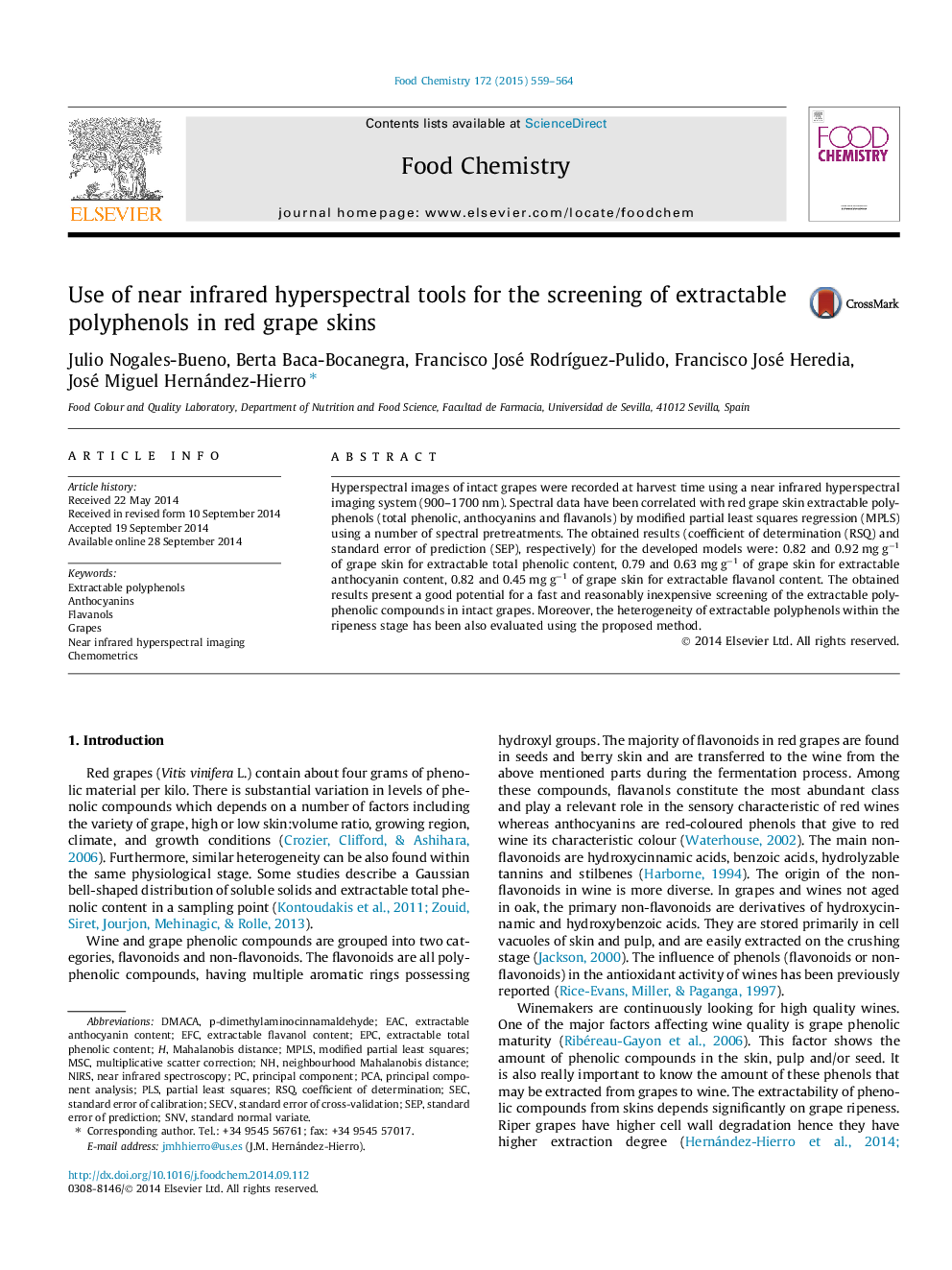| Article ID | Journal | Published Year | Pages | File Type |
|---|---|---|---|---|
| 7594298 | Food Chemistry | 2015 | 6 Pages |
Abstract
Hyperspectral images of intact grapes were recorded at harvest time using a near infrared hyperspectral imaging system (900-1700 nm). Spectral data have been correlated with red grape skin extractable polyphenols (total phenolic, anthocyanins and flavanols) by modified partial least squares regression (MPLS) using a number of spectral pretreatments. The obtained results (coefficient of determination (RSQ) and standard error of prediction (SEP), respectively) for the developed models were: 0.82 and 0.92 mg gâ1 of grape skin for extractable total phenolic content, 0.79 and 0.63 mg gâ1 of grape skin for extractable anthocyanin content, 0.82 and 0.45 mg gâ1 of grape skin for extractable flavanol content. The obtained results present a good potential for a fast and reasonably inexpensive screening of the extractable polyphenolic compounds in intact grapes. Moreover, the heterogeneity of extractable polyphenols within the ripeness stage has been also evaluated using the proposed method.
Keywords
MPLSSNVSEPRSQSECVNIRSEFCMSCDMACAEACp-DimethylaminocinnamaldehydeSECPLSExtractable polyphenolsEPCPCAAnthocyaninsStandard normal variateGrapesPrincipal component analysismultiplicative scatter correctionNear infrared hyperspectral imagingPartial least squaresModified partial least squaresStandard error of predictionStandard error of calibrationstandard error of cross-validationcoefficient of determinationMahalanobis distanceFlavanolsprincipal componentNear Infrared spectroscopyChemometrics
Related Topics
Physical Sciences and Engineering
Chemistry
Analytical Chemistry
Authors
Julio Nogales-Bueno, Berta Baca-Bocanegra, Francisco José RodrÃguez-Pulido, Francisco José Heredia, José Miguel Hernández-Hierro,
